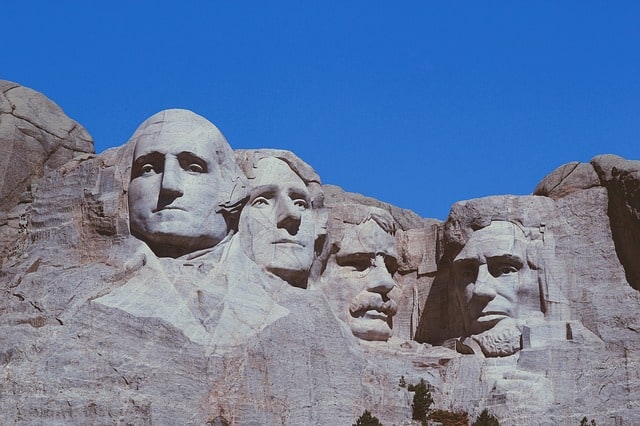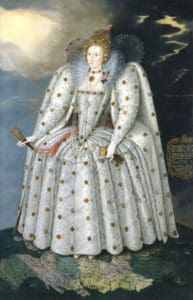 Presidents’ Day, this year on Monday, February 21, can be a confusing holiday. It’s traditionally the third Monday in February. Some people think it’s a holiday to celebrate all America’s past presidents, and that is partially true, but the observed federal holiday was officially established in 1885 as “Washington’s Birthday.” It became Presidents’ Day after it became part of the 1971’s Uniform Monday Holiday Act, an attempt to create more three-day weekends for the nation’s workers. Since Abraham Lincoln’s birthday is February 12th, it became a provision of the Act to include the celebration of Lincoln’s birthday with Washington’s. At the same time, the original Washington holiday date of Nov. 22nd was moved to the third Monday of February, which falls between the dates of the two presidents’ birthdays. The overall intention was and remains to celebrate all presidents, past and present, at the same time recognizing Presidents Washington and Lincoln.
Presidents’ Day, this year on Monday, February 21, can be a confusing holiday. It’s traditionally the third Monday in February. Some people think it’s a holiday to celebrate all America’s past presidents, and that is partially true, but the observed federal holiday was officially established in 1885 as “Washington’s Birthday.” It became Presidents’ Day after it became part of the 1971’s Uniform Monday Holiday Act, an attempt to create more three-day weekends for the nation’s workers. Since Abraham Lincoln’s birthday is February 12th, it became a provision of the Act to include the celebration of Lincoln’s birthday with Washington’s. At the same time, the original Washington holiday date of Nov. 22nd was moved to the third Monday of February, which falls between the dates of the two presidents’ birthdays. The overall intention was and remains to celebrate all presidents, past and present, at the same time recognizing Presidents Washington and Lincoln.
We’ve learned in school about our first and sixteenth presidents and the historical periods they lived in. However, two contemporary authors have revisited the two men and their times and have recently written books that provide new insights.
Nathaniel Philbrick, a prolific author of American History, retraces George Washington’s journey as a new president through the original thirteen colonies in his new book, Travels with George: In Search of Washington and his Legacy. Philbrick actually does travel the same route with his wife and dog, recounting history and his personal reflections about Washington along the way. His model was, of course, Steinbeck’s Travels with Charley: In Search of America, which he referenced and seemed to greatly admire.
Philbrick has been an avid student of American history and his many books both educate and entertain us. He has taken his extensive knowledge of history and crafted it into a literary career. Travels with George is an important book in our times when the country’s forefathers are being critiqued. Philbrick presents America in 1789 as a nation fragile and divided between those who favored the Constitution and those who did not trust the central government that the Constitution had created. He reminds us that Washington was a man of the people, a reluctant president, and, like many of his contemporaries, an owner of slaves. He did, however, stipulate in his will that his slaves be freed upon his death. The new America needed the strength of a formidable leader such as George Washington.
As Philbrick journeyed the same path Washington traveled, he recounted some of the facts and myths surrounding Washington’s legacy. One was the “Washington elm” phenomenon. Every town from Billerica to Hartford has a marker indicating that Washington stopped to rest under their elm trees. Some problems are that it was November and cold when he passed thru those towns, and he was reportedly in a hurry. Also, the elms would have been small seedlings in 1789. Another myth is that Washington had wooden teeth. It was true that he had decaying teeth from the age of 24 and had to have many extracted. The practice in the 18th century was to replace a diseased tooth with a healthy one from another person, often a slave, who was paid for such a donation. It is assumed that Washington received his tooth transplants in such a manner.
Lincoln on the Verge: Thirteen Days to Washington, by Ted Widmer, is about another president, another journey and another century. As in Washington’s time, it was a nation divided once again. Widmer visits the 13 days of Lincoln’s train journey in 1861 from Springfield, Illinois to Washington DC toward his inauguration. He portrays Lincoln as a seemingly unlikely leader but someone who could connect with the people, much like Washington, and rise above the many setbacks thrown in his path. In Wilmer’s words, Lincoln was “canny, he was lucky and he was stubborn.”
As Philbrick does in his book about Washington, Widmer discloses little known facts about Lincoln. One in particular was the story that a woman, Kate Warne, who worked as one of Pinkerton’s detective agents, helped prevent the assassination of Lincoln before he became President. In fact, at one point in his journey an unattended carpet bag was found in Lincoln’s train car. Inside was a grenade that was set to explode within 15 minutes. Regardless of the ongoing threats to Lincoln’s life, his secretary John Nicolay wrote that “his sympathy with and for the people” kept him from fearing for his own safety.
Philbrick’s Travels with George, though lengthy, is a must read for anyone interested in history, and especially George Washington’s 18th century America. Adding to the interest for New Englanders is a geographical familiarity to the places, cities and towns visited. Wilmer’s Lincoln on the Verge is equally lengthy and intriguing. In a review of Lincoln on the Verge, fellow author Adam Goodheart said, “Widmer finds relevance and every reason for hope in the past.” The same can be said for Nathaniel Philbrick.
Norma Logan is the Literacy Volunteer Coordinator at the Morrill Memorial Library in Norwood, MA. Look for her article in the February 17, 2022 issue of the Transcript and Bulletin.



